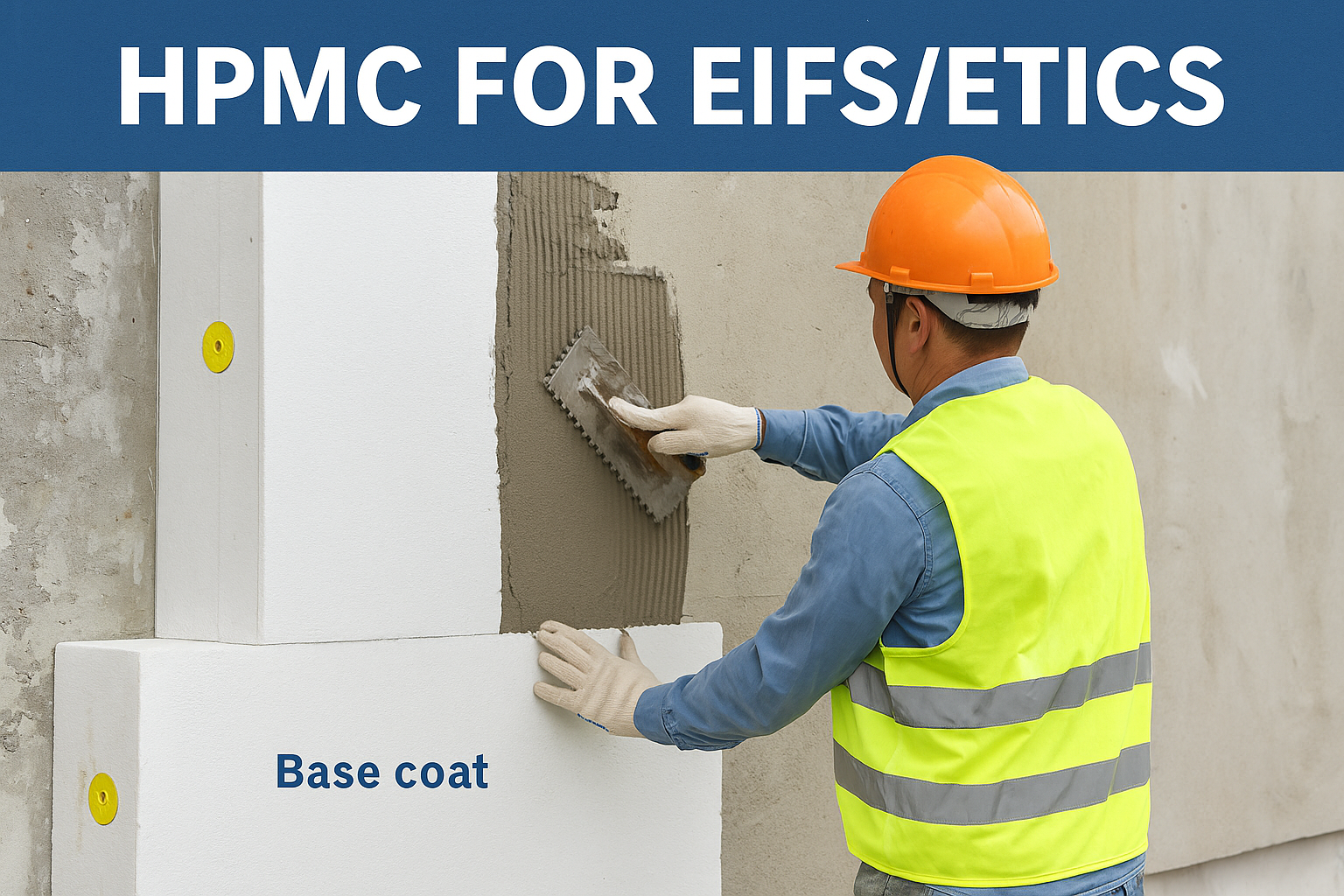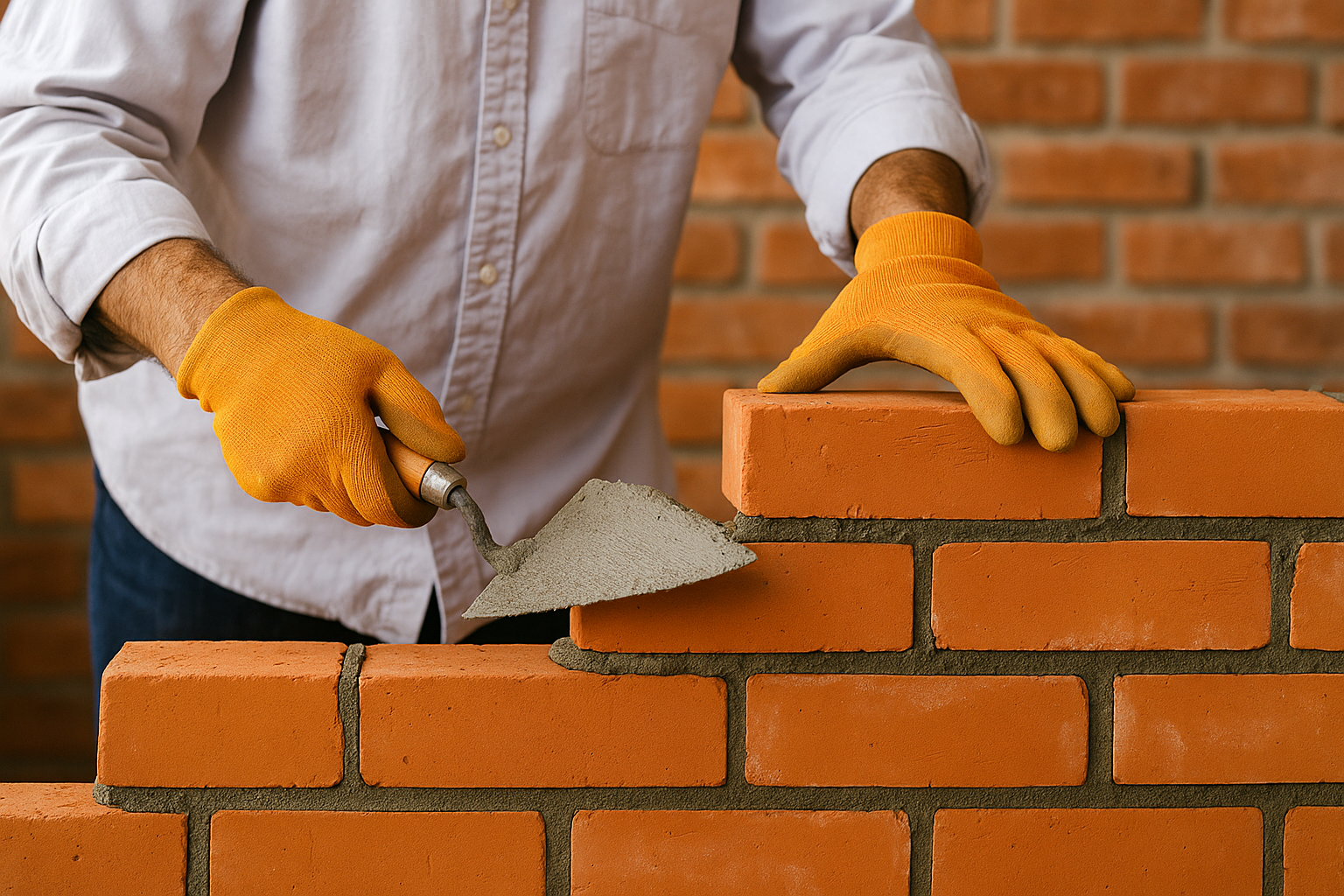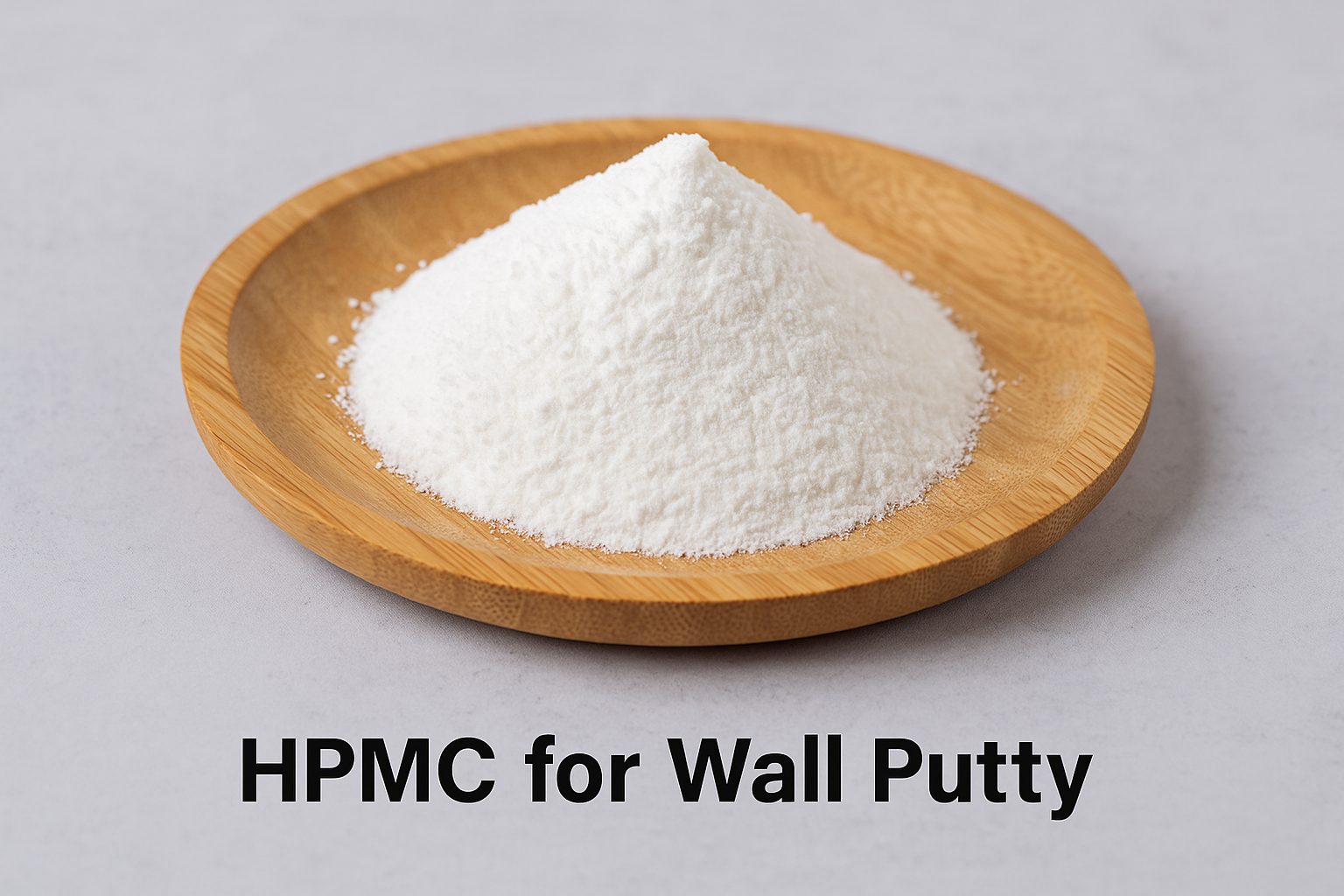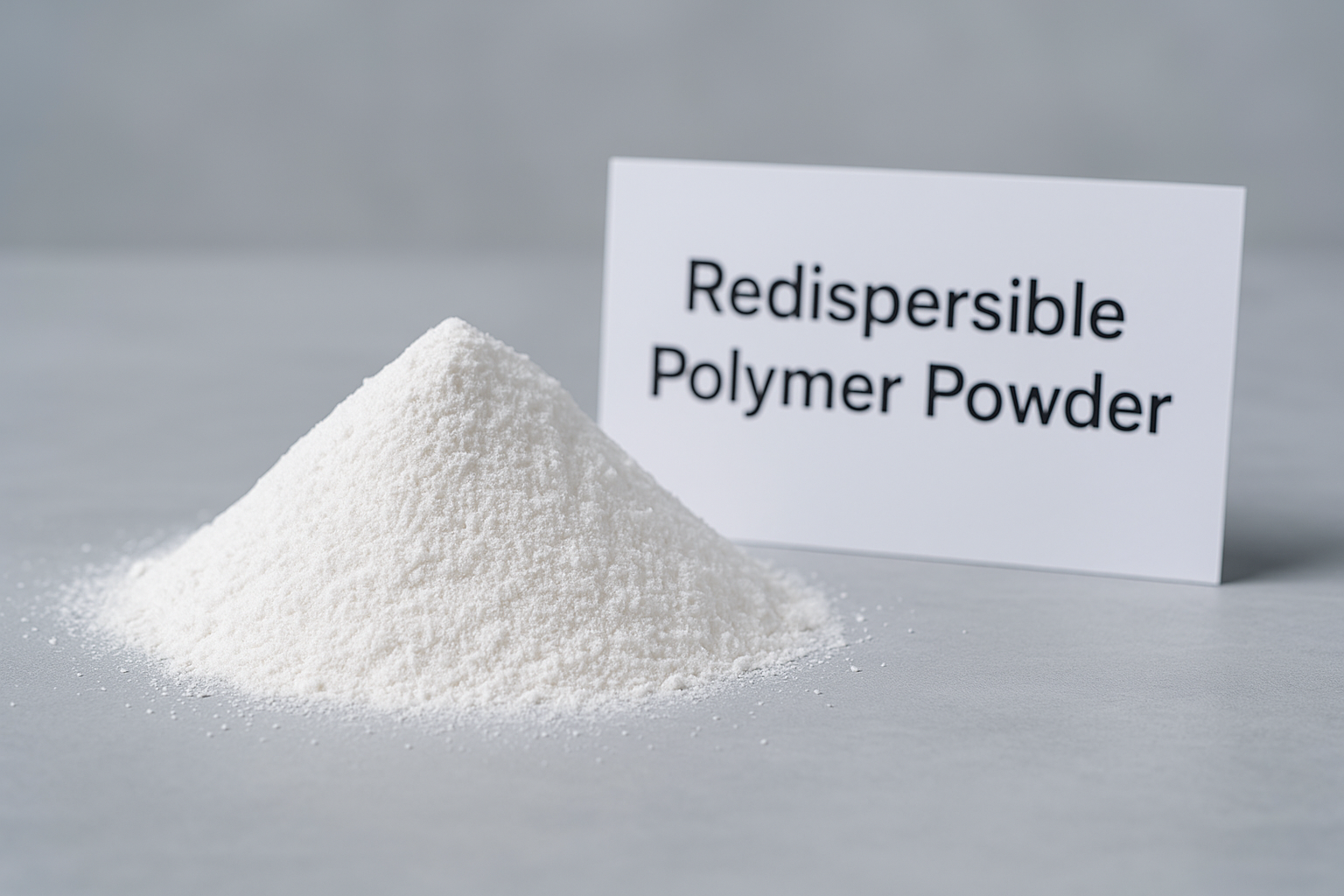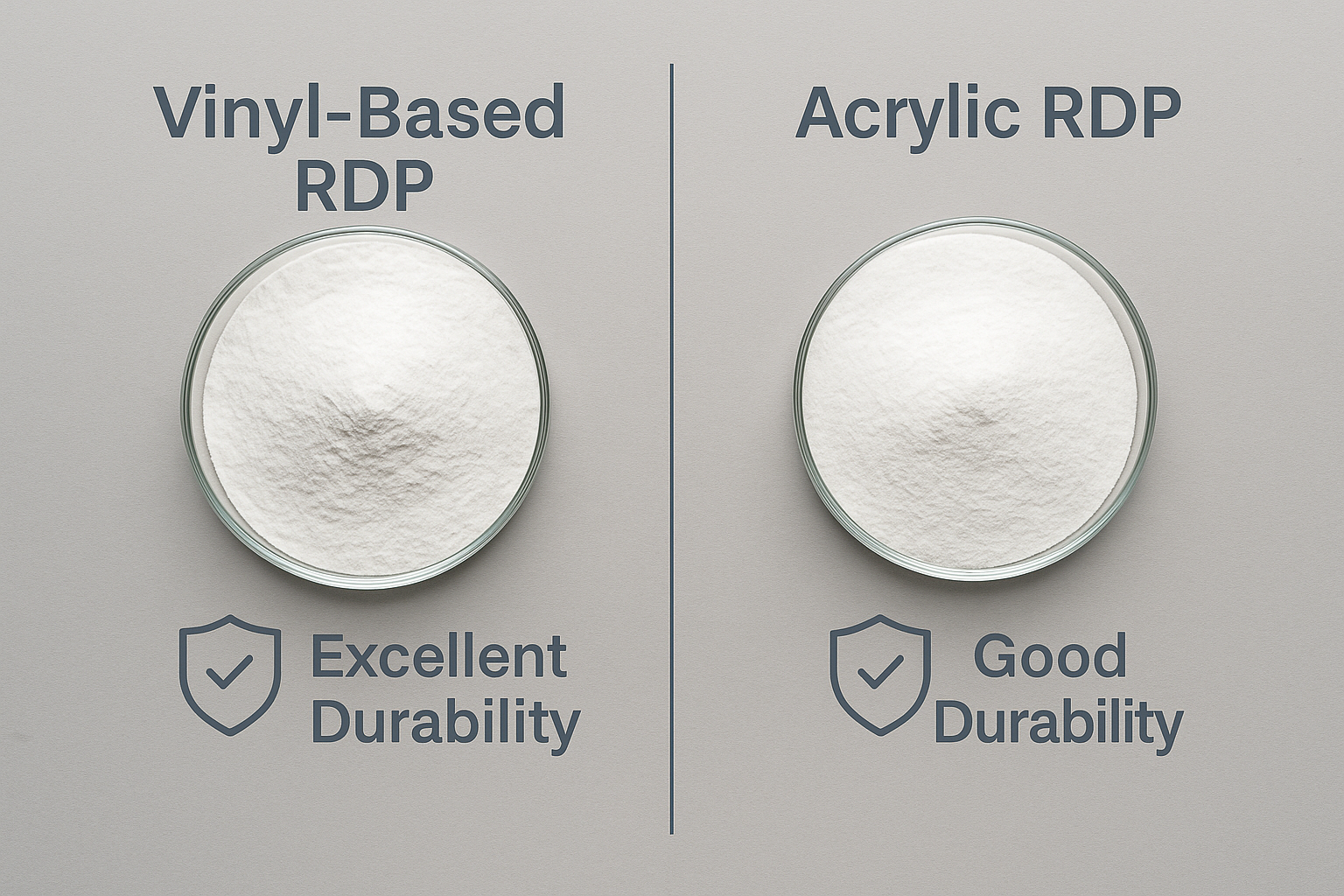Are you struggling with EIFS systems that crack, fail adhesion tests, or lack workability? Poor quality HPMC additives might be your problem, costing you time and money on rework and customer complaints.
EIFS1 (Exterior Insulation and Finish System) or ETICS2 (External Thermal Insulation Composite System) are advanced wall cladding systems that require high-quality HPMC3 (Hydroxypropyl Methylcellulose) to function properly. The right HPMC ensures proper water retention, adhesion strength, and workability for successful installation and long-term performance.
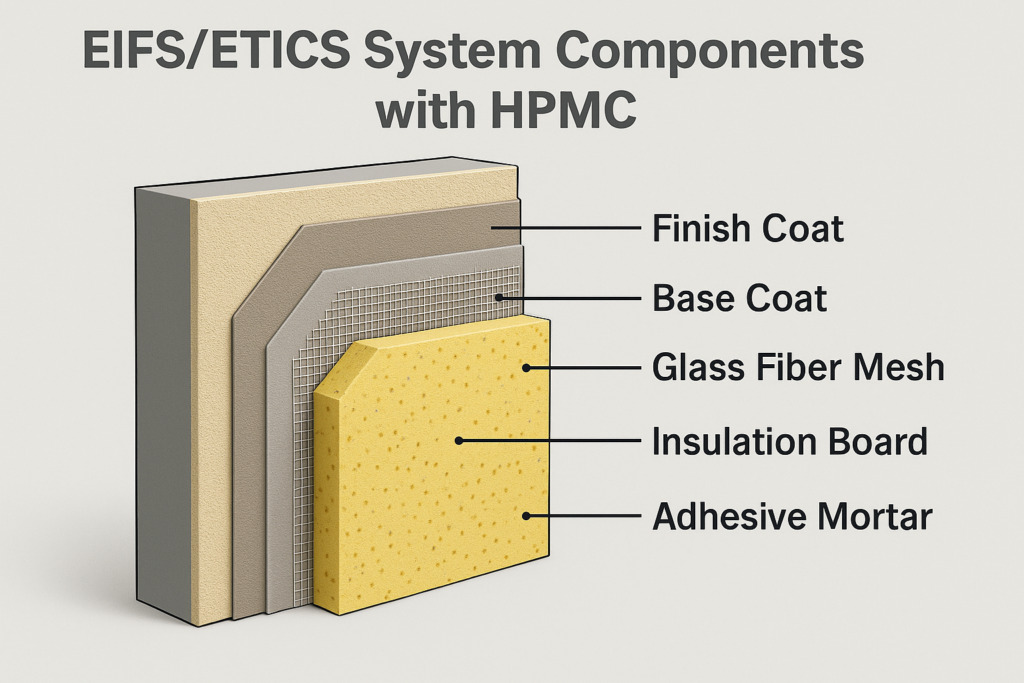
I've been in the construction chemicals industry for years, and I've seen firsthand how the quality of HPMC can make or break an EIFS project. At Wanhong, we've dedicated ourselves to producing premium HPMC specifically formulated for EIFS/ETICS applications. Let me share what makes our products stand out and why the right HPMC matters for your projects.
Amazing Benefits of EIFS/ETICS?
Contractors often ask me why they should switch to EIFS when traditional systems seem to work fine. The pain point is clear: rising energy costs and stricter building codes are making traditional systems increasingly problematic and expensive.
EIFS/ETICS systems provide superior energy efficiency with R-values 3-5 times higher than traditional stucco. They create a continuous insulation barrier that eliminates thermal bridges, reducing heating and cooling costs by up to 40% while offering design flexibility with various textures and finishes.
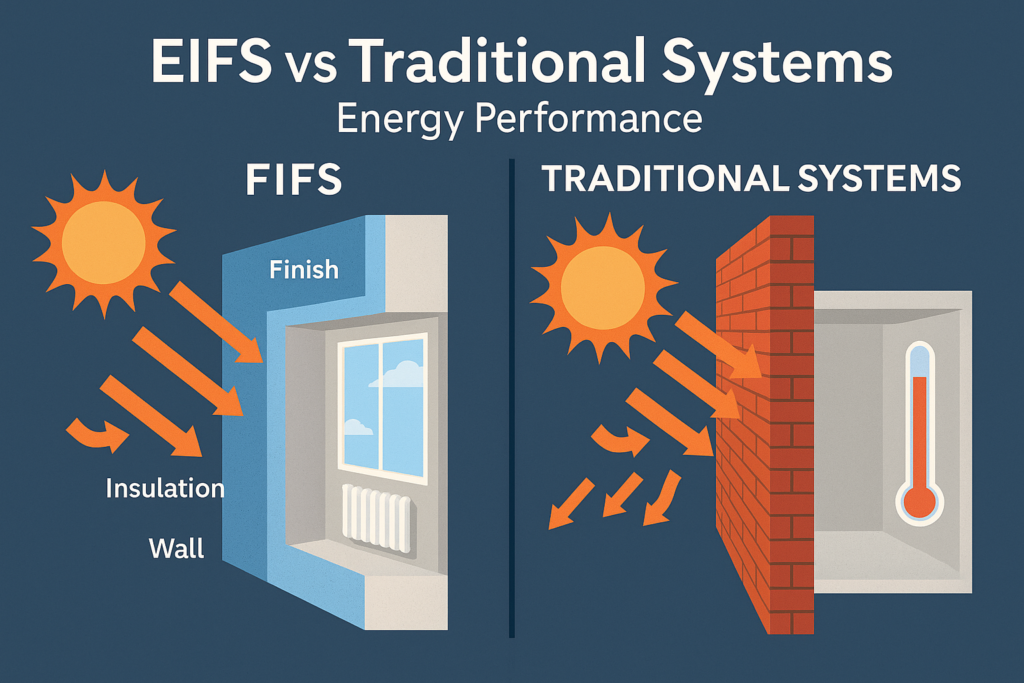
EIFS systems have transformed the building industry over the past few decades. As energy codes become stricter worldwide, EIFS has become the preferred solution in over 40 countries. Beyond energy efficiency, EIFS offers remarkable durability when properly installed. The multi-layered system includes a water-resistant base coat, reinforcing mesh, and finish coat that work together to protect buildings from moisture intrusion and weathering.
Another significant advantage is design versatility. EIFS can be molded into various architectural features like cornices, arches, and columns without the weight and cost of traditional materials. This system allows for creative expression while maintaining thermal performance, something traditional systems can't match. Additionally, EIFS systems contribute to LEED certification points, helping builders meet green building standards while providing long-term value to building owners through reduced maintenance costs.
2 Major Differences of EIFS VS Stucco?
Many clients get confused between EIFS and traditional stucco, often mistaking one for the other. This misunderstanding leads to improper specifications and application problems that can compromise building performance.
EIFS differs from stucco in two key ways: composition and installation. EIFS uses foam insulation boards with polymer-modified base coats requiring HPMC for proper consistency, while stucco is cement-based applied directly to the wall. EIFS provides superior insulation (R-value of 4-5.6 per inch vs. stucco's 0.2).

When examining EIFS and stucco systems in greater detail, it's important to understand their structural and performance differences. EIFS consists of multiple components working together as a system: adhesive, insulation board, reinforced base coat, and finish coat. Each layer serves a specific purpose, creating a continuous insulation envelope around the building. The base coat, which contains HPMC, creates a critical waterproof barrier that protects the insulation and substrate.
Traditional stucco, by contrast, is essentially a cement mixture applied in multiple coats directly to a building surface, often with metal lath for reinforcement. While it provides durability, it offers minimal insulation value and can develop cracks over time due to building movement and temperature fluctuations.
The installation process also differs significantly:
| Feature | EIFS | Traditional Stucco |
|---|---|---|
| Base material | Foam insulation board | Metal lath or masonry |
| Number of components | 4-5 layers | 2-3 layers |
| Weight | 1-2 lbs/sq. ft. | 7-8 lbs/sq. ft. |
| Installation time | Faster | Longer (requires curing) |
| Crack resistance | High | Moderate |
| Repairability | Moderate | High |
| HPMC requirement | Critical | Less critical |
These differences make EIFS the superior choice for modern construction where energy efficiency and versatile aesthetics are priorities.
Importance of Good Quality HPMC in EIFS Construction?
Many contractors face frustrating issues with EIFS installations: poor workability, premature drying, insufficient adhesion, and even system failures. These problems often stem from using low-quality HPMC, which can't deliver the proper water retention and workability needed.
High-quality HPMC is essential in EIFS construction because it provides optimal water retention, which allows for proper cement hydration and prevents premature drying. This ensures strong adhesion between system components, improves workability for applicators, and enhances freeze-thaw resistance for long-term durability.
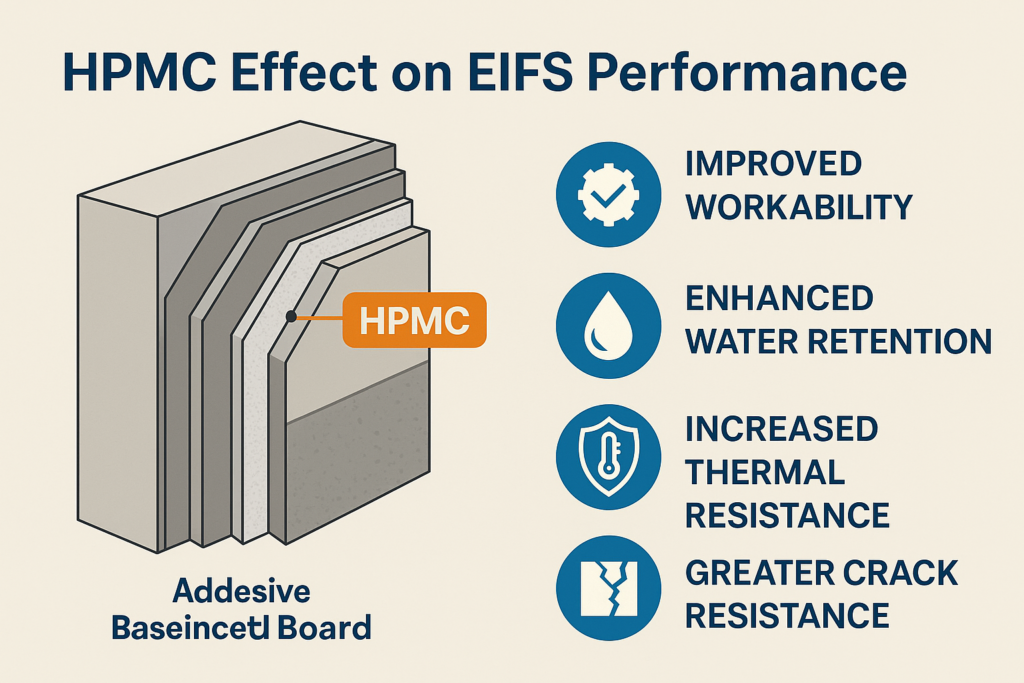
The role of HPMC in EIFS systems extends far beyond simple water retention. When examining successful EIFS installations, we see that quality HPMC affects multiple performance aspects of the entire system. During my factory visits with clients, I often demonstrate how different grades of HPMC perform under various conditions to show these critical differences.
Quality HPMC directly impacts application properties like open time and slip resistance. With properly formulated HPMC, installers can achieve consistent coverage and thickness, reducing material waste and labor costs. The base coat must remain workable long enough to embed reinforcing mesh properly, yet set quickly enough to maintain efficiency on the jobsite.
Beyond application, HPMC influences long-term performance through:
- Improved bond strength - Our laboratory tests show up to 30% higher adhesion values with premium HPMC grades compared to standard grades
- Enhanced flexural strength - Critical for preventing cracks as buildings naturally expand and contract
- Controlled water migration - Prevents efflorescence and moisture-related failures
- Thixotropic behavior - Allows material to flow when worked but stay in place once applied
I've seen numerous projects where substituting lower-quality HPMC led to callback costs exceeding any initial savings. Quality HPMC might represent a small percentage of total EIFS material cost, but its impact on system performance is disproportionately large.
Wanhong HPMC Highlights?
Building material manufacturers often struggle with inconsistent HPMC quality from suppliers, leading to batch variations, production delays, and customer complaints. This unpredictability affects your production schedules and quality control efforts.
Wanhong HPMC stands out with consistent viscosity (±10% tolerance), optimized particle size for dust-free mixing, and targeted substitution ranges (MS 1.4-2.2) specifically engineered for EIFS/ETICS applications. Our strict quality control ensures every batch meets identical performance standards for reliable adhesion and workability.
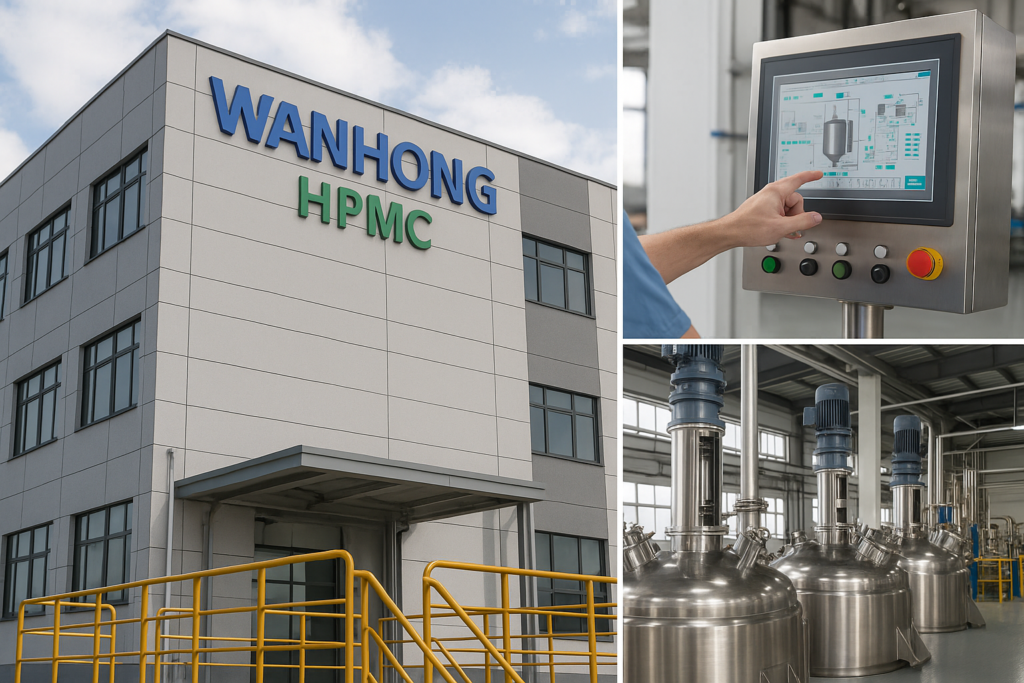
At Wanhong, we've invested significantly in advanced production technology that gives our HPMC unique advantages for EIFS applications. Our six production lines utilize a modified Ranney process that creates more uniform etherification, resulting in HPMC with exceptionally consistent performance batch after batch. This consistency is critical for EIFS manufacturers who need predictable material behavior for their quality control processes.
Our EIFS-grade HPMC undergoes additional processing steps beyond standard HPMC production. We implement a proprietary surface treatment that substantially reduces dust during handling while accelerating dissolution in mortar mixtures. This seemingly small improvement makes a significant difference in real-world applications, allowing faster mixing times and reducing air entrainment problems that can weaken the final cured product.
We maintain tight control over key parameters that matter most for EIFS:
| Parameter | Wanhong Specification | Industry Standard | Benefit |
|---|---|---|---|
| Viscosity consistency | ±10% | ±25% | Predictable workability |
| Particle size distribution | 100% pass 100 mesh | 95% pass 100 mesh | Faster dissolution |
| Ash content | <0.5% | <1.0% | Cleaner formulation |
| Gel temperature | Customizable 58-85°C | Fixed | Season-specific formulations |
| Moisture content | <2% | <3% | Enhanced stability |
These technical advantages translate directly to better EIFS system performance. When I visit customers who've switched to our products, they consistently report reduced mixing time, extended working time, and fewer callbacks for issues like cracking or delamination.
EIFS Construction Plus Points?
Construction companies often struggle with traditional building envelope systems that are labor-intensive, prone to thermal bridging, and difficult to achieve consistent finishes. This leads to extended project timelines and budget overruns.
EIFS construction offers substantial advantages including up to 40% faster installation than brick or stone, lightweight materials reducing structural requirements, and seamless continuous insulation eliminating thermal bridges. The system provides design flexibility with multiple finish options while reducing long-term maintenance costs.

EIFS construction represents a significant advancement in building envelope technology. In my experiences overseeing numerous construction projects, I've documented how EIFS can transform both the construction process and long-term building performance. The system's layered approach creates opportunities for efficiency at multiple stages of construction.
From a practical construction standpoint, EIFS installation requires fewer specialized trades than many competing systems. A properly trained crew can handle the entire exterior envelope installation, streamlining scheduling and reducing coordination issues between multiple subcontractors. The lightweight components also mean less strain on workers and fewer equipment requirements for material handling.
The construction benefits extend beyond just the installation phase:
- Weather flexibility - With proper additives like our specialized HPMC, EIFS can be installed across a wider temperature range than traditional stucco
- Reduced structural requirements - The lightweight system (typically 1-2 lbs per square foot) reduces dead load requirements throughout the building
- Fewer penetrations - The continuous system minimizes the need for control joints and expansion details that can complicate other cladding systems
- Adaptability to irregular substrates - The system can accommodate minor substrate irregularities without extensive preparation
- Simplified detailing - Modern EIFS systems include integrated solutions for transitions, penetrations, and terminations
For building owners, the reduced maintenance requirements are particularly valuable. The elastomeric properties of quality EIFS systems allow them to accommodate minor building movement without cracking, while the color-integrated finish coats maintain their appearance longer than painted surfaces, extending repainting cycles by years.
Your One-Stop HPMC3 Manufacturer and Supplier?
Finding reliable HPMC suppliers who understand EIFS requirements is challenging. Many distributors offer generic HPMC products not optimized for EIFS, resulting in application problems and inconsistent performance that frustrate contractors and damage your reputation.
As your one-stop HPMC manufacturer for EIFS applications, Wanhong offers direct-from-factory pricing, customized specifications for your exact application, technical formulation assistance, and consistent batch-to-batch quality. We provide multiple viscosity grades specifically engineered for basecoat, adhesive, or finish coat requirements.
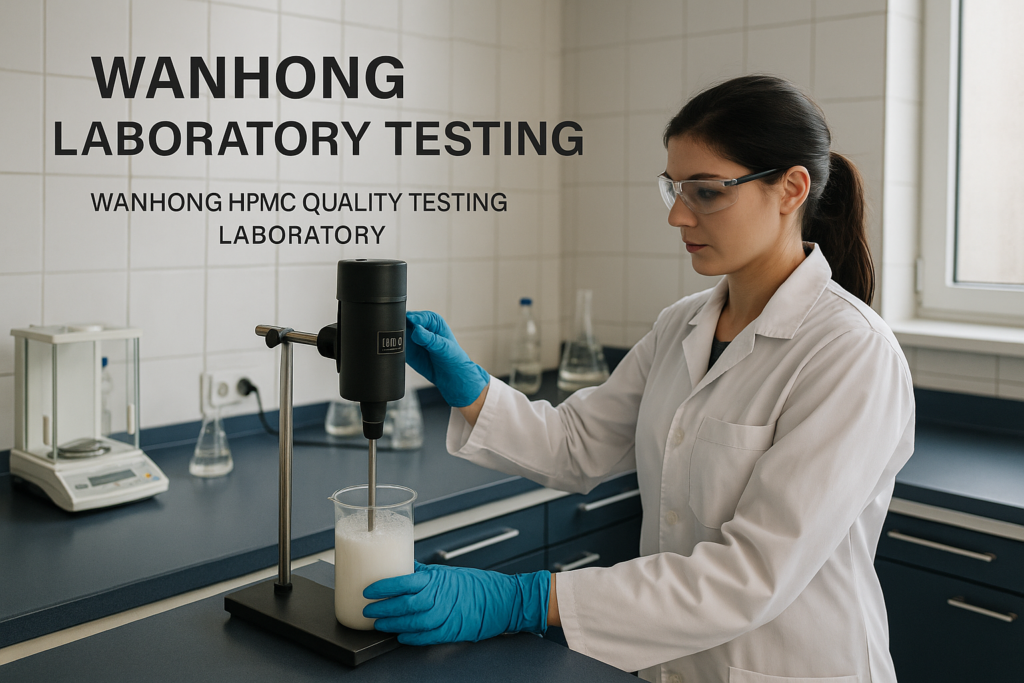
Working directly with a manufacturer rather than through distributors offers significant advantages that many of my clients didn't realize until they made the switch to Wanhong. As both manufacturer and supplier, we eliminate intermediaries that often add cost without adding value. This direct relationship allows us to offer more responsive technical support and faster problem resolution.
Our production facility in China features six production lines dedicated to different HPMC specifications, giving us unparalleled flexibility to customize products for specific applications. When EIFS manufacturers work with us, they gain access to our extensive R&D resources, including our formulation laboratory where we can simulate different environmental conditions to optimize HPMC performance.
The advantages of this manufacturer-direct relationship include:
- Custom viscosity profiles - We can produce HPMC with precise viscosity curves optimized for specific application temperatures
- Application-specific modifications - Addition of specialty additives like anti-sagging agents or retarders as needed
- Packaging flexibility - From 25kg standard bags to 1000kg super sacks or even container-direct bulk packaging
- Direct technical exchange - Our chemists work directly with your technicians to solve specific formulation challenges
- Supply chain transparency - Complete visibility from raw material to delivery
Our quality control system tracks every batch from raw material receipt through final packaging, with samples retained for ongoing stability testing. This comprehensive approach ensures that the HPMC you receive always meets the exact specifications your EIFS system requires.
Where To Buy EIFS Stucco?
Finding reliable EIFS materials4 that conform to your specific regional requirements can be frustrating. Many suppliers offer inconsistent quality or lack the technical expertise to help you select the right products for your specific application needs.
To purchase quality EIFS stucco materials, contact regional distributors of major manufacturers like Dryvit, STO, or BASF, or reach out directly to Wanhong for HPMC components5. For customized EIFS systems that meet local building codes, work with manufacturers offering technical support and application training rather than general building suppliers.
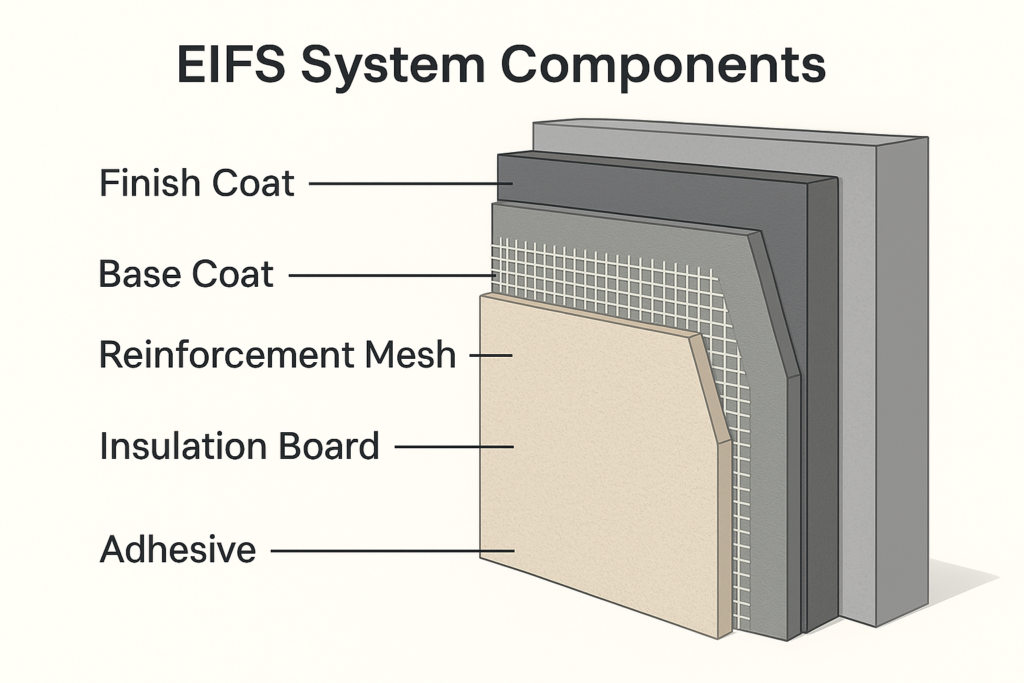
The EIFS industry has evolved significantly over the past decade, with distribution channels becoming increasingly specialized. In my work with contractors across different markets, I've observed that the most successful EIFS installations come from materials sourced through knowledgeable channels that provide more than just products – they provide expertise.
Regional distribution networks often offer advantages for contractors needing immediate access to materials. Major manufacturers have established networks of authorized distributors who maintain inventory and can provide local technical support. These authorized channels also ensure you're receiving genuine products that meet warranty requirements, an important consideration for liability protection.
For EIFS manufacturers looking to source raw materials like HPMC, working directly with specialists like Wanhong provides several advantages:
- Technical compatibility - Our HPMC is specifically formulated for EIFS applications, unlike general construction grades
- Customization options - We can adjust properties like water retention and workability to match your specific formulation needs
- Consistent supply chain - Our six production lines ensure reliable supply even during peak demand periods
- Regulatory compliance - Our products meet international standards including EU-CPR, REACH, and various environmental certifications
When evaluating EIFS material suppliers, consider these factors beyond just price:
- Technical support availability
- Training resources for proper application
- Warranty terms and claims process
- Code compliance documentation
- Track record in similar projects
I recommend requesting sample materials and conducting small-scale tests before committing to large orders, especially when working with new suppliers or in challenging environmental conditions.
Find Your Product Match!
Contractors and suppliers often waste time and money using the wrong grade of HPMC for their specific EIFS applications. Different components of EIFS systems require different HPMC properties, and using an inappropriate grade leads to application problems and system failures.
To find your perfect HPMC match for EIFS applications, consider these key factors: required viscosity6 (5,000-150,000 mPa·s depending on component), methoxyl content (DS 1.4-2.2 for optimal water retention), particle size (finer for faster dissolution), and application temperature range. Wanhong offers free sample testing to determine your ideal specification.
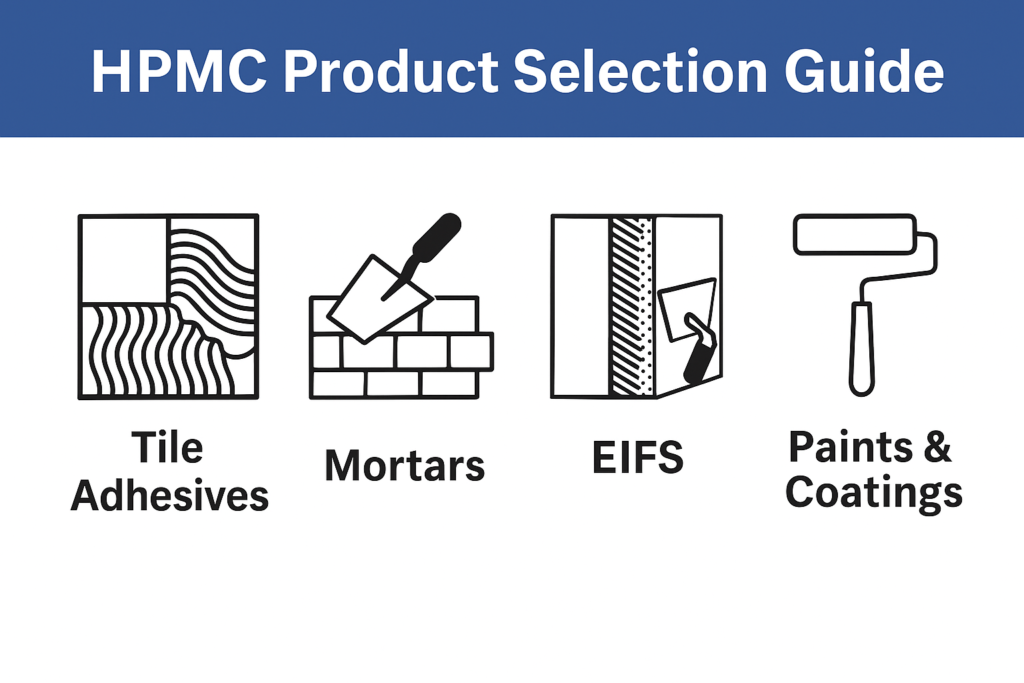
Finding the right HPMC specification for your EIFS formulation requires understanding how different molecular characteristics affect performance in specific applications. In my technical consultations with clients, I always start by analyzing which performance attributes matter most for their particular system components.
For EIFS base coats, the critical balance is between water retention and workability. Too little water retention leads to premature drying and poor adhesion to the insulation board, while excessive water retention can extend setting times beyond practical work schedules. Our laboratory testing has identified optimal viscosity ranges for different climate conditions:
| Climate Condition | Recommended Viscosity | Water Retention | Setting Time |
|---|---|---|---|
| Hot/Dry (>30°C) | 80,000-100,000 mPa·s | >95% | 6-8 hours |
| Moderate (15-30°C) | 50,000-80,000 mPa·s | 92-95% | 8-12 hours |
| Cold/Humid (<15°C) | 30,000-50,000 mPa·s | 85-92% | 12-24 hours |
For adhesives, the critical factors shift toward initial grab strength and extended open time. Our WH-45H grade offers the ideal balance for most adhesive applications, with modified surface treatment to enhance flowability without sacrificing water retention.
Finish coats present different challenges, requiring HPMC that promotes smooth workability while minimizing brush marks and facilitating texturing. Our testing has shown that hydroxypropyl substitution levels (MS) between 0.15-0.30 provide optimal performance for most decorative finishes.
To help clients find their perfect match, we developed a systematic approach:
- Application assessment - Determining exact requirements for each component
- Environmental analysis - Evaluating typical application conditions and climate challenges
- Performance testing - Running small-batch tests with different HPMC grades
- Field validation - Confirming laboratory results match real-world performance
This methodical approach has helped hundreds of clients identify the precise HPMC specifications that optimize their EIFS systems. Rather than the "one-size-fits-all" approach many suppliers recommend, our targeted matching process ensures each component performs at its best, creating a stronger overall system.
Related Applications?
Many EIFS contractors and manufacturers wonder if their existing materials and expertise can be applied to other construction applications. This uncertainty limits business expansion opportunities and revenue potential in related markets.
HPMC used in EIFS systems can be adapted for related applications including thin-set tile adhesives, self-leveling compounds, render systems, and joint compounds. The same water retention, workability, and adhesion properties that benefit EIFS make HPMC valuable in these applications, allowing contractors to diversify with minimal additional investment.
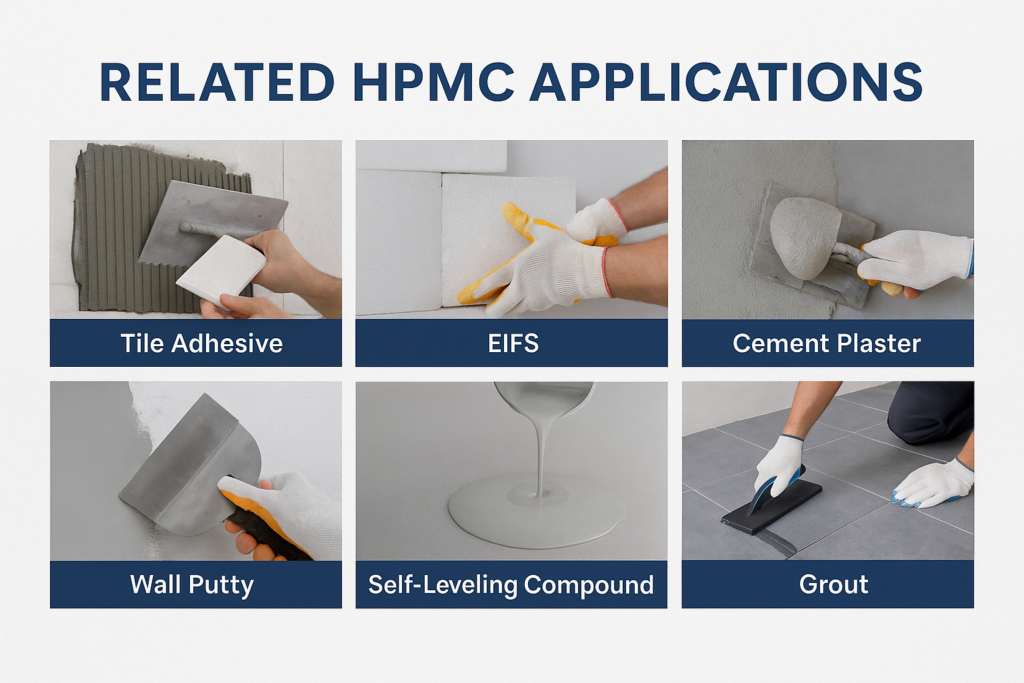
The expertise gained in working with EIFS systems creates a natural pathway to diversification into related construction applications. I've worked with numerous clients who have successfully leveraged their EIFS knowledge to develop complementary product lines. The chemical properties that make HPMC valuable in EIFS systems translate well to other cementitious and gypsum-based applications.
One particularly synergistic application is thin-bed tile adhesives, which require many of the same performance characteristics as EIFS adhesives: strong water retention, extended open time, and excellent adhesion to various substrates. EIFS contractors often find that expanding into tile installation allows them to offer more comprehensive services to the same customer base.
Self-leveling compounds represent another logical expansion. These high-flow cementitious products rely on HPMC to control water migration during the critical flow and leveling period. Without proper water retention, these compounds can fail through surface dusting or delamination. The same HPMC grades that perform well in EIFS basecoats often excel in self-leveling applications with minor formulation adjustments.
Other compatible applications include:
- Render and plaster systems - Both traditional and lightweight systems benefit from HPMC's workability enhancement
- Joint compounds - HPMC provides the critical hang and slip properties needed for smooth application
- Stucco admixtures - Adding HPMC to traditional stucco improves workability and reduces cracking
- Specialty repair mortars - The adhesion enhancement from HPMC is particularly valuable in concrete repair applications
When expanding into these related areas, it's important to consider the specific performance requirements of each application. While the same HPMC may work across multiple products, the optimal dosage and any complementary additives may need adjustment. Our technical team provides formulation guidance to help clients successfully develop these related product lines without extensive R&D investment.
Conclusion
Choosing the right HPMC manufacturer for your EIFS/ETICS systems is crucial for quality, performance, and profitability. Wanhong offers specialized HPMC grades with consistent quality, technical support7, and customization options that will optimize your EIFS applications and help your business thrive.
-
Explore the advantages of EIFS systems, including energy efficiency and design flexibility, to enhance your building projects. ↩
-
Learn about ETICS systems and their unique benefits compared to EIFS for better construction choices. ↩
-
Discover the critical role of HPMC in EIFS systems and how it affects performance and durability. ↩ ↩
-
Explore this link to find reliable suppliers and distributors for high-quality EIFS materials. ↩
-
Understand the role of HPMC components in EIFS and other construction applications. ↩
-
Learn how viscosity influences the performance of HPMC in EIFS applications. ↩
-
Discover the value of technical support in ensuring successful EIFS installations. ↩

